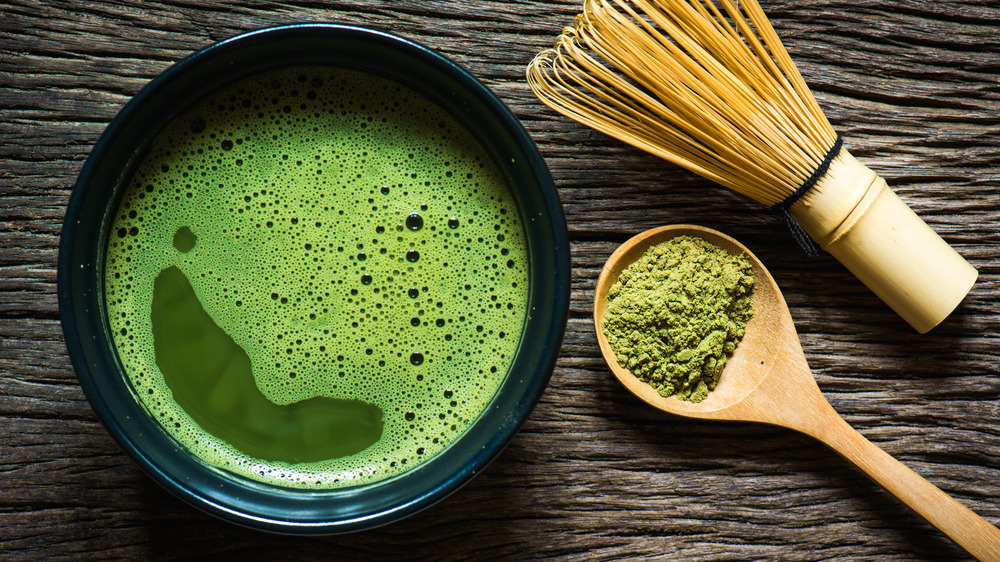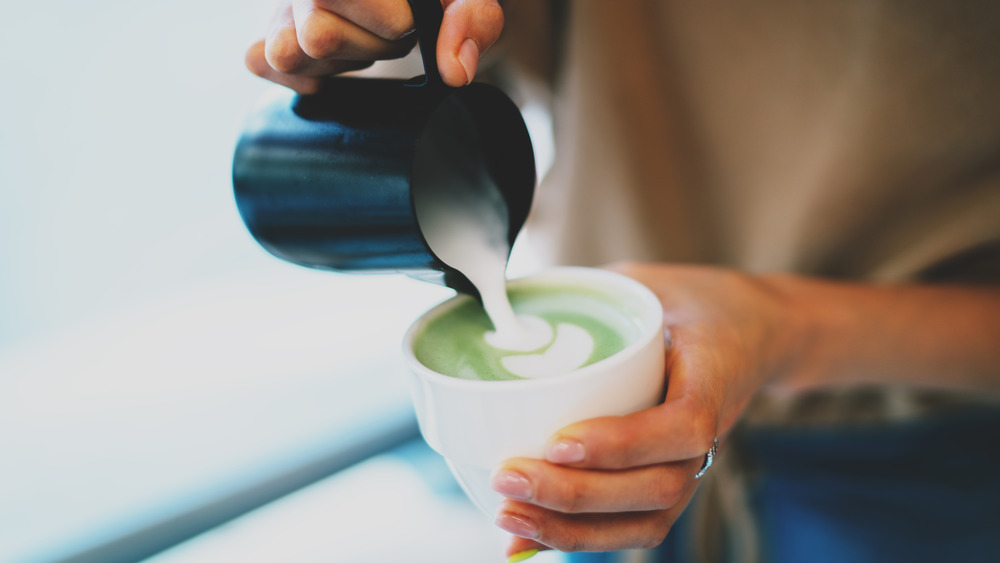How Is Matcha Different From Other Green Tea?
You might think of green tea as being the healthiest kind. After all, it's credited with benefiting heart health and may even cause you to live longer as a result (via CNN). But is matcha actually healthier than steeped green tea? And, more importantly, what is the real difference between the two? Matcha is made of the same plant as the loose leaf green teas you're familiar with: Camellia sinensis (via Healthline). The difference is twofold: to make matcha, that plant is shielded from the sun for about a month before being harvested, which turns it a deeper green color and increases the levels of amino acids.
Then, the stems and veins of the plant are ground into a fine powder that is whisked into hot water, rather than being steeped in it. Because the plant is mixed into the drink and not discarded, you can count on matcha to pack a much stronger punch than typical green tea when it comes to antioxidants, caffeine, and earthy flavor, which is why it's either consumed in small quantities or diluted further with milk and sugar (via Spoon University). In fact, if you were to drink a full cup of undiluted matcha, it would contain 280 mg of caffeine, eight times the amount of a cup of tea (via Healthline).
How to make the perfect cup of matcha at home
According to Lexico, the name "matcha" comes from the Japanese terms for "to rub" and "tea," which will make a lot of sense to you if you've ever made matcha yourself. However, the first and probably most important step is choosing your matcha powder. When shopping, look for a "ceremonial grade" powder and choose the brightest green powder possible (via NBC News). Darker matcha indicates the powder is older and thus has lost some of its benefits. It might be tempting to pick up the cheaper matcha, but keep in mind the pricier powders offer not just a higher quality but a sweeter taste and more finely-ground texture, resulting in a smoother beverage experience (via Vogue).
To prepare the matcha, you'll need a measuring spoon, bowl, whisk, and boiling water. Let the water cool for two to three minutes before whisking a splash with 1/2 teaspoon of matcha powder, until it forms a smooth paste, then gradually add the remaining 1/3 cup of hot water, while continuously whisking until the drink looks smooth and has a layer of foam on top (via The Manual). If you find unwanted lumps in your matcha, try sifting the powder before adding the water. Once you have the technique down, you can adjust the amount of matcha powder you use to create the texture and taste you prefer.

